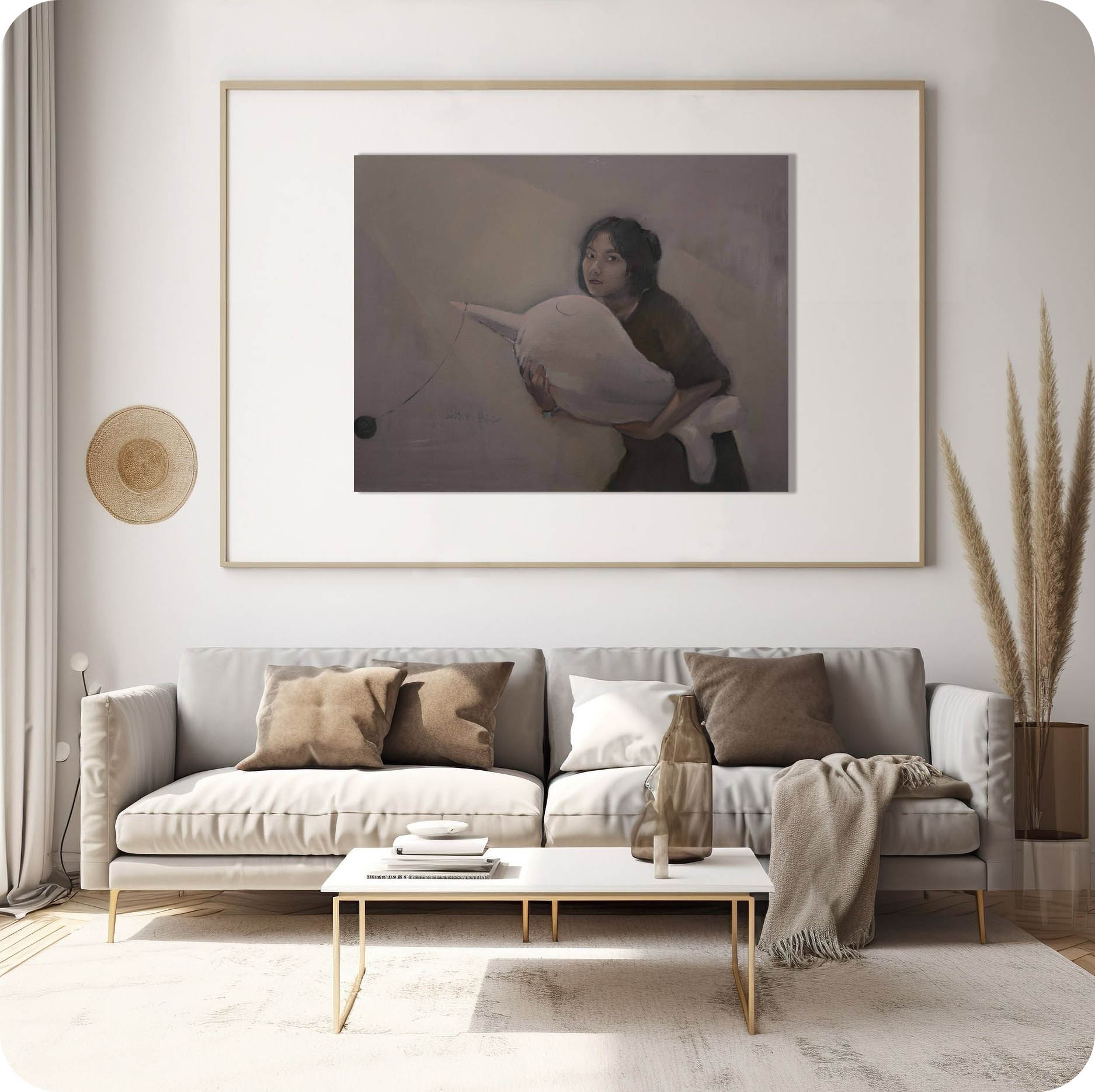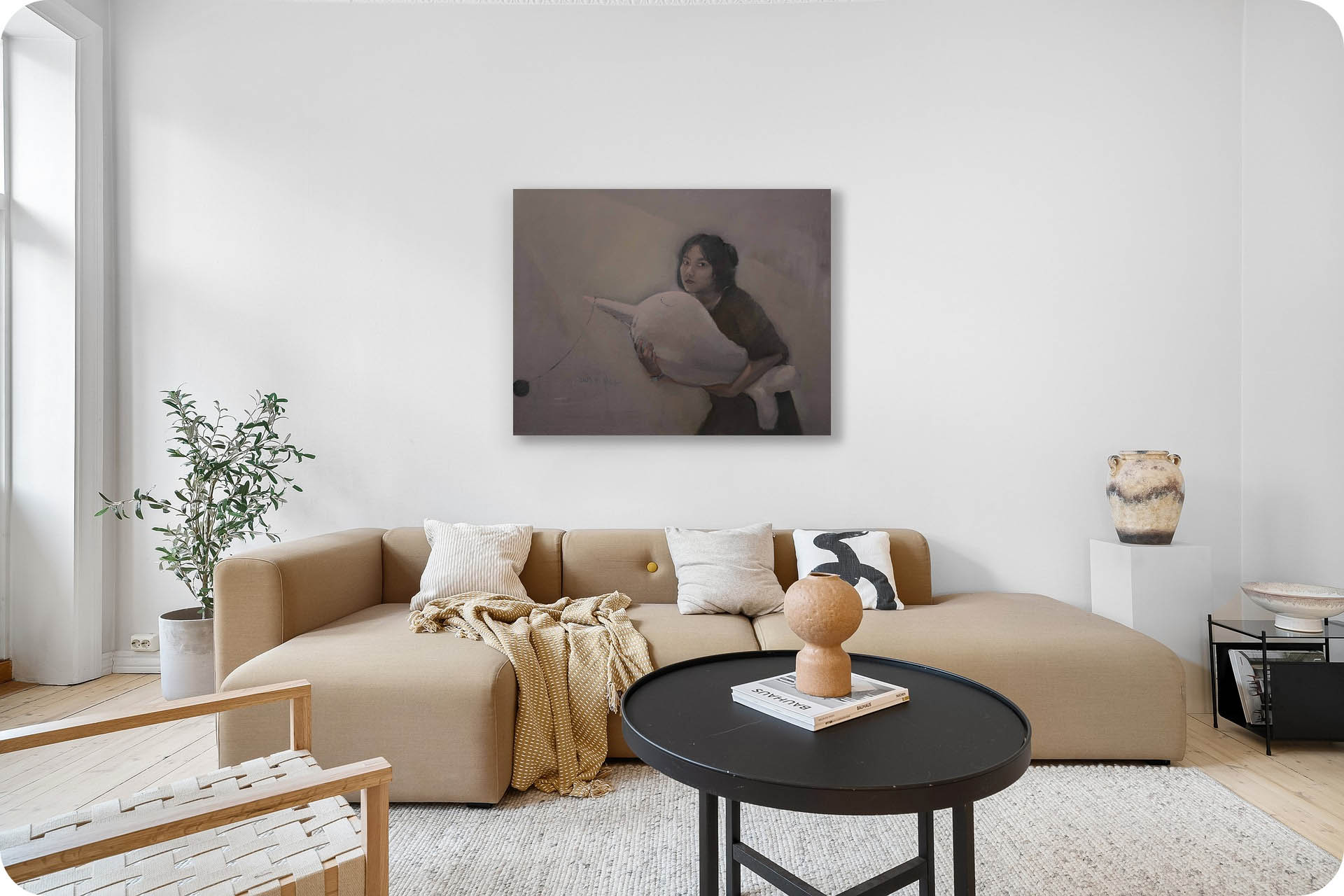This painting was created in 2018. With the end of the sketching class this year, my sketching journey stopped at a few simple drawings for Miss Hui. Of course, my oil painting skills have also improved a lot in the past year or so, and I have carefully explored my own way of speaking.
Overall Size: /
Size without the frame: /
Country: China
Date: 2018
Materials: Oil paint on linen
Condition: well preserved
Creative themes and style | My works revolve around the creative concept of "The land of humanity, People on the land". The people in the painting are people in nature, and the lines, shapes, and colors are close to nature. The nature in the painting is nature in the eyes of humans, existing in interaction with humans.I don’t pursue a series of works with a fixed and continuous style. I hope that the style of the pictures will synchronize with the changes in my life and always remain oscillating. The performance of the work must be in sync with the development of one's own life in order to be Sincere and powerful. Ideas are later.
An Interview with Artist Philo by Artphiloso Gallery
If you would like to collect this artwork or know more about the artist, please contact us.


This painting Discolored is intriguing, as it extends the emotional spectrum formed by Loss and Loss I. Yet here, the involvement of an “object” introduces a new metaphorical layer, giving the emotion a different resonance.
A1: She is holding a large, soft, white form that resembles either a fantastical “unicorn” or an abstract plush figure. Its closed eyes and pliant presence stand in stark contrast to the girl’s alert gaze—suggesting it as a projection of inner comfort or imagined solace. Yet its lifeless stillness (as if asleep or even dead) underscores the fragility of this emotional anchor.
A2: The overall palette is muted and desaturated. Even the large white object is not a bright, pure white, but rather dimmed with gray. Around the figure, no vivid hues remain—only dullness and fading. The title Discolored reflects not only the loss of chromatic intensity, but also the waning of vitality and emotional energy.
A3: Unlike in Loss, she does not bow her head; instead, she looks outward, her eyes filled with unease and guardedness. She clutches the soft white “fantasy,” as if fearing it might be taken away, while also sensing it no longer carries true radiance. This ambivalence—wanting to protect yet feeling the emptiness—deepens the painting’s tension.
A4: They are crucial details of tension. The black sphere suggests a gravitational pull or force of reality, set against the girl’s fragile, fantastical object. The thin line linking them symbolizes a tenuous connection—perhaps the precarious balance between “the weight of reality” and “the solace of illusion.”
A5: Its essence lies in the theme of “guarding an illusion as it fades.” The girl holds tight to the white form that embodies softness and fantasy, yet the surrounding desaturated tones and the pull of the black sphere signal futility. Emotionally, the journey shifts from the sorrow of Loss toward the void of Discolored.
A: Click here to view ARTPHILOSO's Guide for Collectors.
